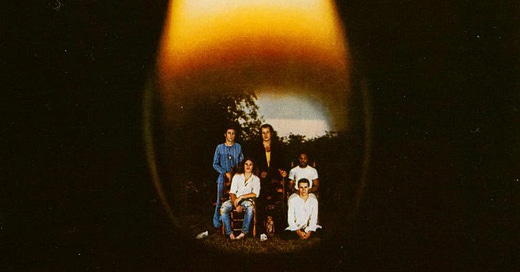What Was On Your College-era Soundtrack?
Fusion (Part 1): The explosive merger of jazz and rock (featuring Miles Davis, Chick Corea, Jeff Beck, Herbie Hancock and more.)
“Fusion” generally refers to mergers between different styles or genres (it can even refer to cuisine). In the music world, the term usually refers to the collision of jazz and rock that happened in the 1970’s and on into the mid 1980’s. It combined the creativity and virtuosity of jazz with the energy and electrified instruments of rock.
This moment produced some of the most exciting music I’ve ever heard, and had a lasting impact on both jazz and rock. Some rock and jazz purists didn’t like it, but when the purists get upset, that’s often a sign that you’re doing something right!
Setting the stage: “Kind of Blue”
You have probably heard this even if you are not a jazz fan. It’s the opening number from Miles Davis’ 1959 album “Kind of Blue”. Music theorists consider it a technical tour-de-force, but it broke through to the wider public in a way few “academic” jazz recordings ever had before (for the general audience of the time, “jazz” was synonymous with swing.)
I think the reason for its popularity is simple: “Kind of Blue” is filled with beautiful melodies and harmonies. You don’t have to be a theorist to “get” it.
This recording featured what some people call the Mount Rushmore of jazz: Davis, John Coltrane, Cannonball Adderly, Bill Evans, Paul Chambers, and Jimmie Cobb, all of whom were giants in their own right, and most of whom went on to lead their own bands.
Miles Davis: “Bitches Brew”
The first Miles Davis album I purchased as a teenager was “In a Silent Way”, which I would later learn was an inflection point for him. It led me to his earlier work, including “Kind of Blue.” With “In a Silent Way,” he began diverging radically from mainstream jazz, introducing electric instrumentation and rock percussion but with a restrained, almost ambient texture.
His next album, “Bitches Brew,” was more radical and more aggressive. It was also the “big bang” of the fusion movement. Mahavishnu Orchestra, Herbie Hancock, Weather Report, and Chick Corea are widely considered the Big Four fusion bands and all four acts were founded by members of the ensemble that recorded “Bitches Brew.”
It says something that Miles Davis could pull this off not once but twice — making a category-defining record with a team of emergent all-stars. This clip is the title track of the album.
…..
Return to Forever: “The Romantic Warrior”
Chick Corea and Stanley Clarke founded Return to Forever and picked up where Miles Davis had left off — expanding the range of sounds and instruments, breaking the concept of genre, merging jazz with rock, throwing in classical influences… Sometimes it didn’t work, but when it did, it was amazing. This is one of their best, featuring their “classic” lineup, with Lenny White on drums and Al DiMeola on Guitar.
Stanley Clarke: “School Days” (with Return to Forever)
After Stanley Clarke left Return to Forever, he released a solo album called School Days, which hit us like a bomb. I remember heated debates among my friends over whether this was a revolution or a sellout. After a career spanning a huge range of styles and collaborators, he reunited with Return to Forever, along with legendary jazz violinist Jean-Luc Ponty, for a series of live concerts.
Here, they play the title track from School Days. The guitarist is Frank Gambale, one of the major figures in prog and experimental guitar. After 35 years, the sound is as fresh as the day it was released. I love how much fun they are all having with it. You also gotta love the bright blue violin.
…….
Mahavishnu Orchestra: “Trilogy” (live)
One of the first fusion groups I heard, even before I was aware of “Bitches Brew,” was Mahavishnu Orchestra. The most radical thing I had been exposed to until then was Led Zeppelin, but MO quickly became part of my college soundtrack. Put simply, it bent my universe into a new shape.
John McLaughlin was a disciple of Miles Davis and, in turn, assembled a group of musicians who would become stars in their own right. This and his next album remain his best work to date. Listen for the drumming by Billy Cobham (also a Miles alum) — it’s an incredible blending of polyrhythmic improvisation, delicate fills, and sheer power. I consider Cobham one of the three or four best drummers I’ve ever heard.
It was hard to choose a track to post. This one is long but well worth the time and captures the band members at the height of their powers, performing live.
Watch for Part II. I’ll be delving into Jeff Beck, Herbie Hancock, and more. If you want to be notified when it is published, please subscribe and sign up for email notifications. Thank you!




I love miles Davis. Thanks for the music biography